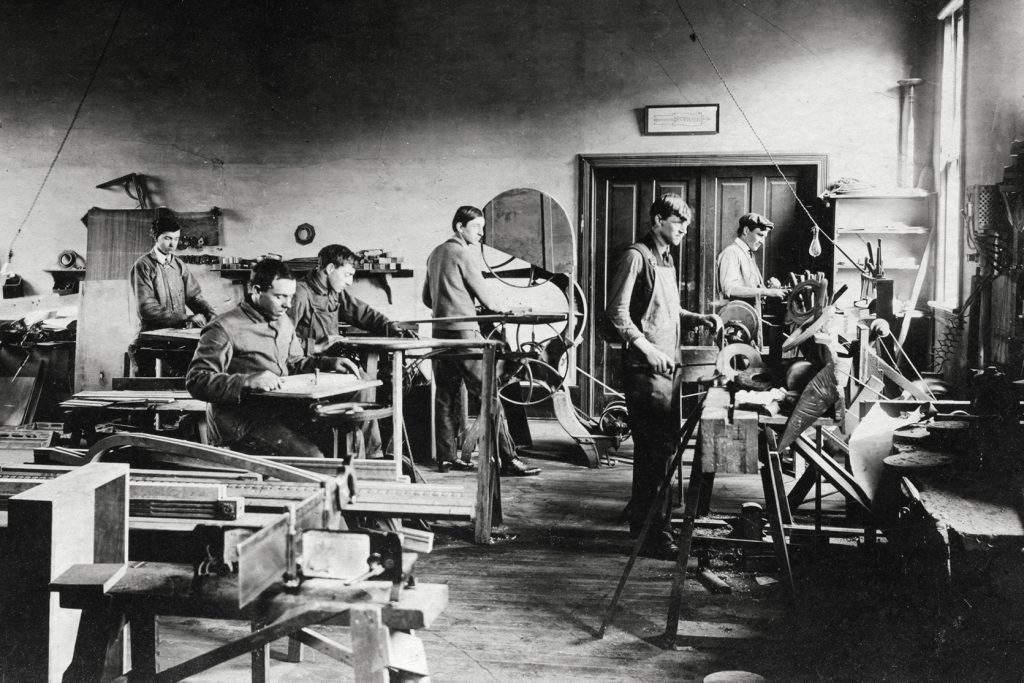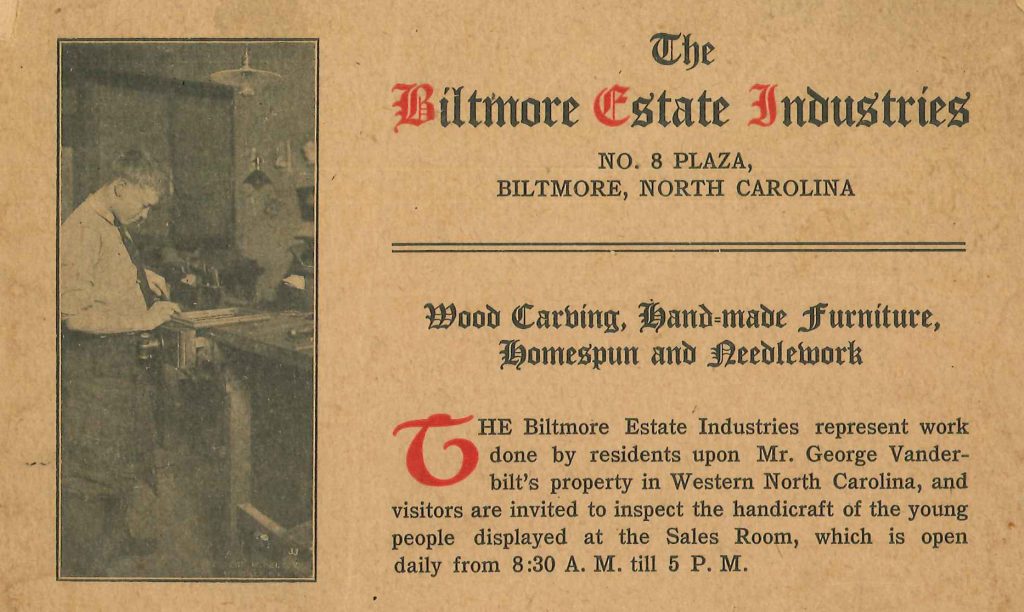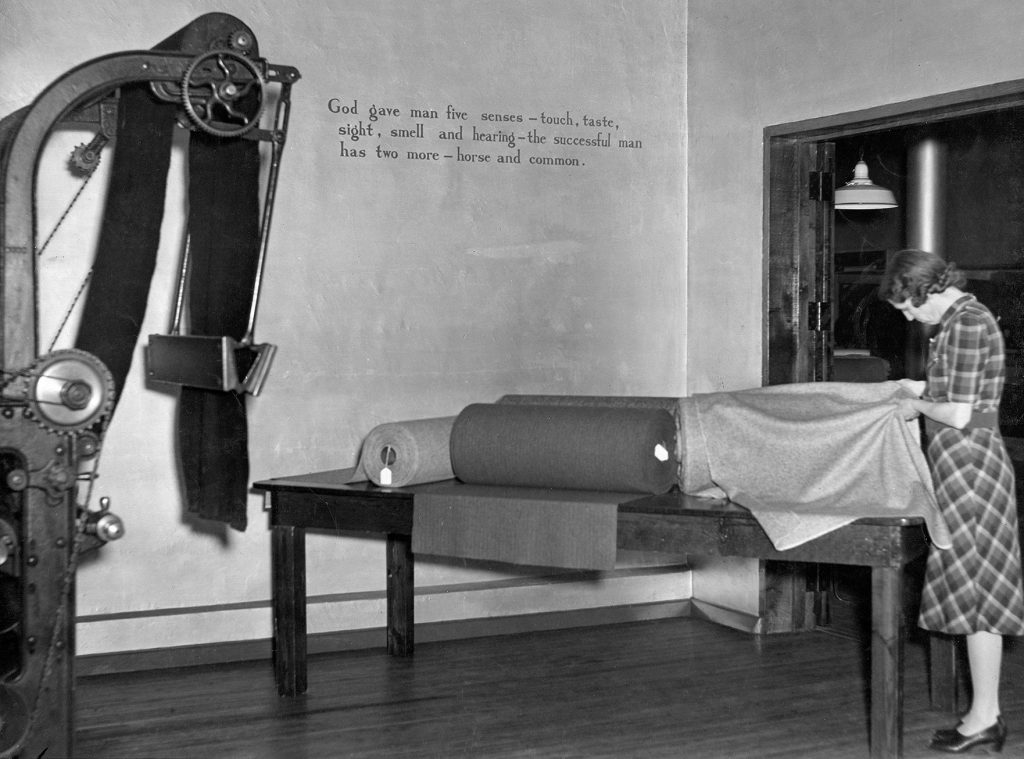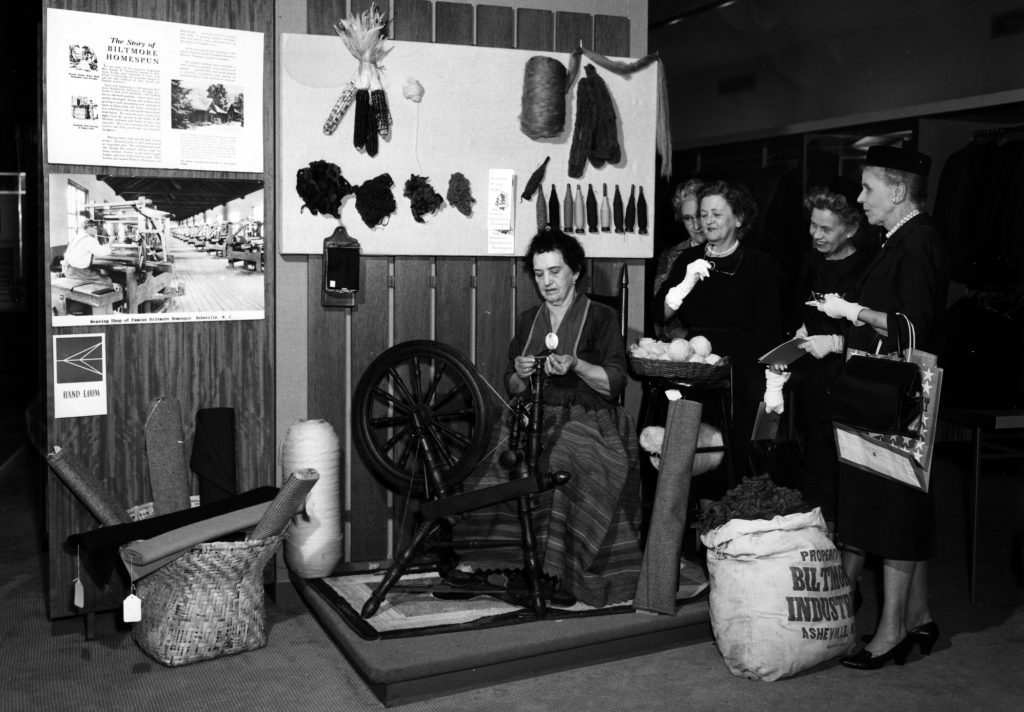It all began in 1901, when two graduates of the Moody Bible Institute in Chicago, Eleanor Park Vance and Charlotte Louise Yale, came to Asheville to spend the summer. Vance, who had formally studied woodcarving at the Art Academy of Cincinnati, began teaching young boys who lived in Biltmore Village – just outside the Vanderbilt’s grand estate – how to carve wooden bowls and picture frames. Word of these free classes spread, and Reverend Rodney Swope of Biltmore’s All Souls Church offered her space so she could take on more students. By the end of 1901, Vance and Yale established the Boys’ Club of All Souls Church, which soon brought the attention of Edith Vanderbilt.
Like Vance and Yale, the Vanderbilts were socially progressive individuals interested in bettering the lives of the economically deprived youth of the Appalachian region. They lent their support and eventually subsidized the development of a craft education program that would become Biltmore Estate Industries in 1905. The Vanderbilts provided more workshop space in Biltmore Village and young men, and eventually women, were taught to embrace craft as a livelihood.

The woodcarvers’ repertoire grew to include furniture, and Edith Vanderbilt took a special interest in the possibilities presented by weaving homespun fabric for men’s and women’s suits. She sent Vance and Yale to Britain to study the weaving process, and a loom was purchased from a mill in Killin, Scotland, and shipped back to Asheville for the woodworkers to study and replicate.
The caliber of their work grew, and demand followed, and Biltmore Estate Industries soon established a reputation for quality craftsmanship. Word of mouth and mail order were the primary forms of marketing, and Edith used the influence of her social connections to push sales of the Industries’ merchandise. By 1909, their best-selling product was handwoven wool cloth, and although woodworking was still important, homespun was the future, and the little cottage industry was in need of yet more space.

After a series of setbacks, including the unexpected death of her husband in 1914, Edith Vanderbilt – devastated and financially strained – agreed to sell the business to Fred Loring Seely, architect and manager of The Grove Park Inn. Seely gave assurances that “he intended to keep the name Biltmore associated with the Industries and only wished to make them bigger and better.” He kept his word, dropped “Estate” from the name, and in 1917 moved the rechristened “Biltmore Industries” to a new home adjacent to The Grove Park Inn. Over the next few years, Seely would construct a total of 6 English-style cottages to house the weaving and woodworking operations.
Seely proved to be a marketing mastermind, and under his direction, the business flourished. He used his charismatic nature and reputation as a businessman to cloth prominent figures in Biltmore Homespun, walking advertisements for his business. The Grove Park Inn guests were natural customers, and Edith Vanderbilt continued wearing and recommending homespun to her society friends. Customers included Thomas Edison, Henry Ford, Helen Keller, Franklin, Eleanor Roosevelt, and President Calvin Coolidge’s wife Grace (for whom “Coolidge Red” was designed). Orders came in from across the country and the globe. At its peak in the late 1920s, Biltmore Industries produced 950 yards of fabric per day and employed 75 to 100 workers.

Fred Seely died in 1942, and the demand for tailored clothing gradually lessened. Synthetic fabrics cut into the market, and industry automation made hand-loomed cloth more expensive. Seely’s son took over management of Biltmore Industries for a few years, but his heart wasn’t in it. Eventually, the nationally acclaimed operation began to fall apart.
In 1953, the struggling business was sold to Harry Blomberg, a local entrepreneur who provided the leadership and resources necessary to keep the fabric production going, yet on a smaller scale, until 1981. During many of those years, the Industries produced some of their finest work, and the customer base was expanded, and new markets were explored. Saks Fifth Avenue, Lord & Taylor, Filene’s, and other fine stores picked up the homespun woven in Asheville.

After Blomberg died in 1991, his family began an energetic campaign to revitalize and reshape the direction of Biltmore Industries, which resulted in the opening of Grovewood Gallery and working artist studios in 1992. Today, the property is known as Grovewood Village. In addition to the gallery and artist studios, it’s also home to Eldr restaurant, the Biltmore Industries Homespun Museum, and an antique car museum that Harry started in the ’60s. The buildings bear marks of the craftspeople who worked here long ago, and the handmade traditions of the past continue.
